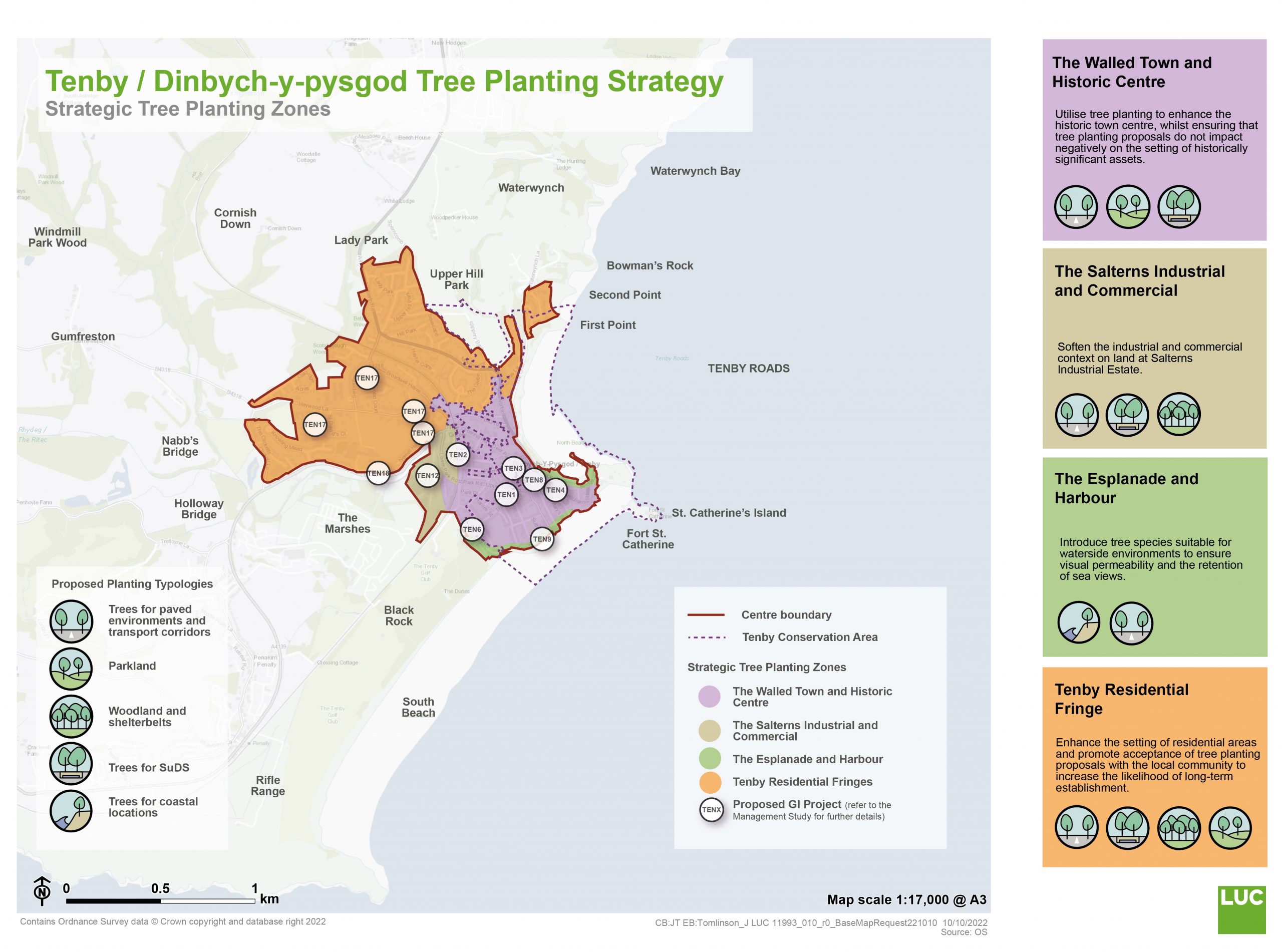- Ensure tree planting complements and does not detract from the distinctive townscape character. Tree planting proposals should have regard to existing building lines and the orientation of existing development. This includes responding to the pattern of the streetscape in terms of bays and ‘nodes’ which break up the facade.
- Views towards and along the length of the town wall should be maintained, ensuring any new tree planting does not significantly impede views or conflict with heritage assets / underground archaeology.
- Utilise tree planting to minimise the visual impact of parked cars on the streetscape as well as the landscape setting of historic streets and buildings.
- Where opportunity arises and where appropriate, consider re-purposing small areas of on street parking to accommodate tree planting within hard landscape (e,g, wider sections along High Street & St Julian’s Street).
- Tree planting in many locations may be best placed at wider junctions and pedestrian areas, utilising narrow form trees to maintain sightlines where needed.
Tenby Tree Planting Zones and Sub-Principles
Tree Planting Zones and Sub-Principles for Tenby are shown on the map and drop down list below. Click on the headings to expand.
Tenby Strategic Tree Planting Zones - Download image

Zones and Sub-Principles
Land encompassed within Tenby Conservation Area includes the spaces between buildings and existing trees within the designated areas. Pembrokeshire County Council (PCC) should therefore be contacted prior to the commencement of works on existing trees subject to a Tree Preservation Order (TPO) or those located within the boundary of Tenby Conservation Area.
Tenby is located within the boundary of Pembrokeshire Coast National Park (PCNP). The development of detailed plans for future tree and woodland planting should take account of PCNP Tree and Woodland Guidance. Detailed assessment of ‘urban’ Landscape Character Areas (such as Tenby) is not included in the PCNP guidance, due to the limited opportunity for new woodland planting in these areas. However, the generic guidance within this document would still apply.
- Increase tree cover to soften the views towards industrial development. This could include the boundaries of car parking areas (such as The Green Car Park).
- Maintain and increase canopy cover at The Green, protecting the site as a key green asset and helping to mitigate visually detracting features and commercial buildings.
- Ensure greening of streets through tree planting, especially where any upgrades of access roads or car parks is undertaken. Ensure new tree planting is required as part of future industrial development.
- Ensure landscape management and future tree planting maintains key views, such as from the promenade and seating areas along Battery Road. This should be achieved utilising well-spaced trees with clear stems / high canopies. Widely spaced, small groups of trees may also be appropriate at the edges of small areas of green space set back from the seafront.
- Utilise small scale tree planting to soften and filter the visual impact of features such as Seafront Car Park. Tree planting may be best located in small numbers to mark entrances and focussed around existing facilities such toilet blocks and near the skate park / play park.
- Integrate trees in small clusters to create a microclimate to improve growing conditions within exposed locations, and to allow the incorporation of shared growing pits / rooting space in hard landscape.
- Utilise tree planting to enhance the setting of residential areas, creating tree lined streets where possible. Sufficient consideration should be given to species selection, ultimate canopy size and maintenance requirements to promote long-term establishment and reduce interference with buildings and services (e.g. telegraph lines / lighting columns).
- Prioritise tree planting in areas with the least site constraints, such as larger areas of amenity grassland and wide verges. This includes areas with minimal recreational value due to small size (e.g. Heywood Court, The Glebe)
- Avoid proposals which conflict with private vehicular access points on residential streets.
- Tree planting proposals should avoid obstruction of highways and Public Rights of Way (PRoW) within the residential context.
- Integrate flowering trees at wider verges and junctions along Narbeth Road to demarcate key routes towards Tenby.
